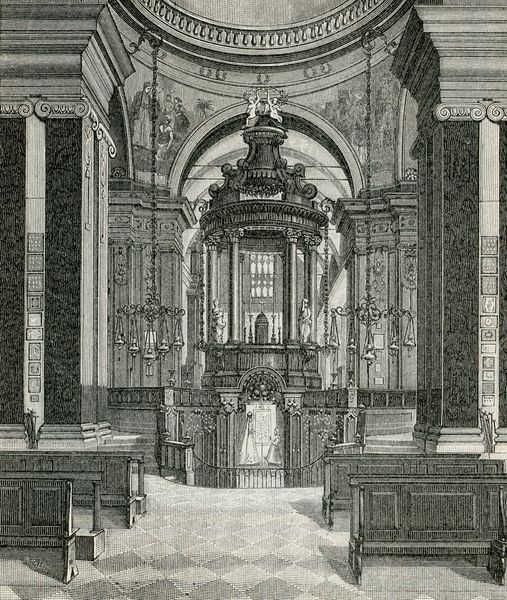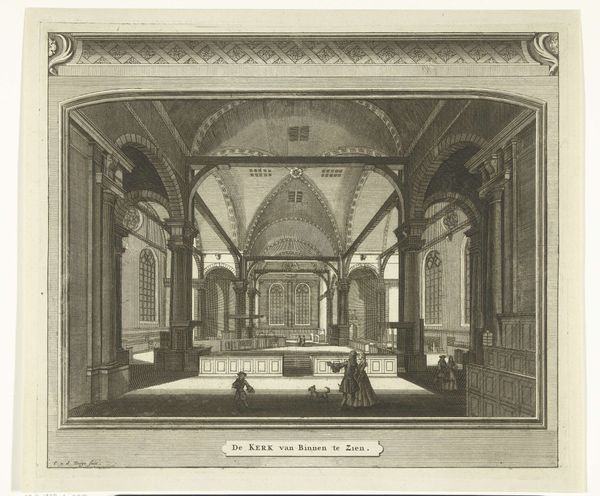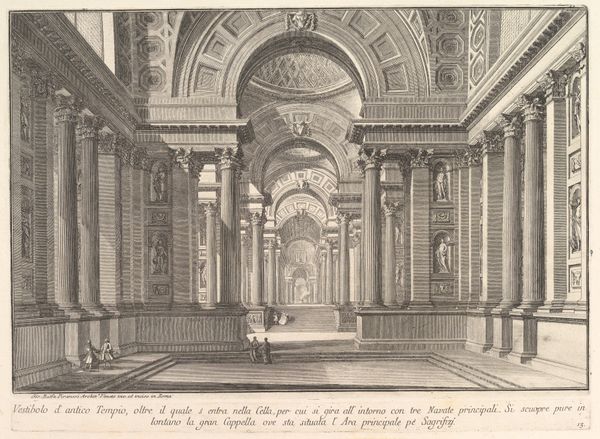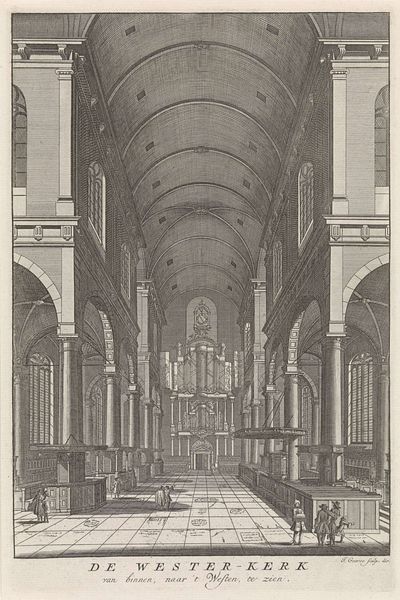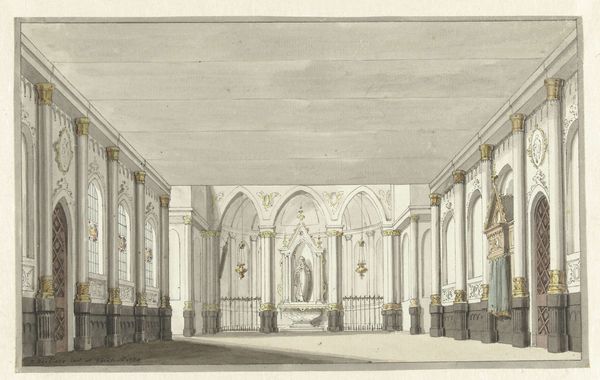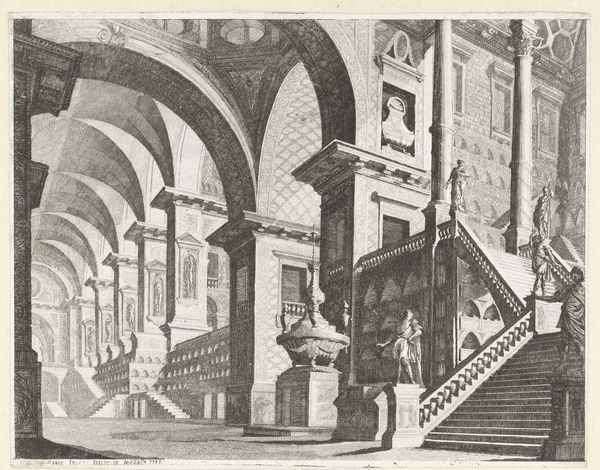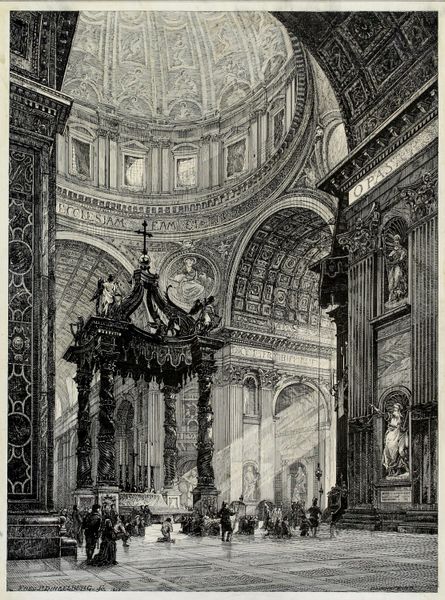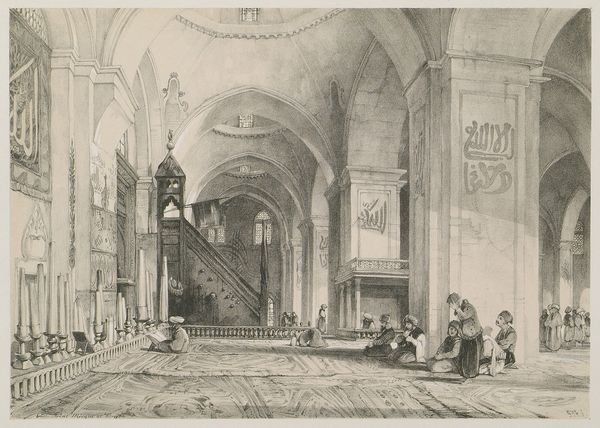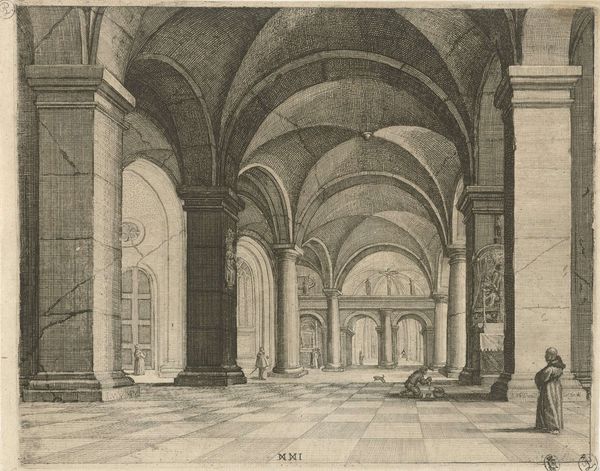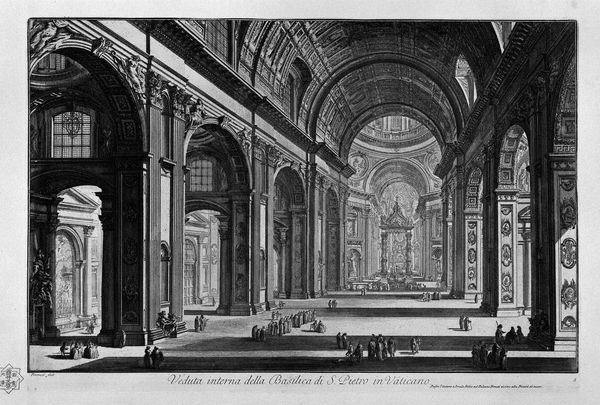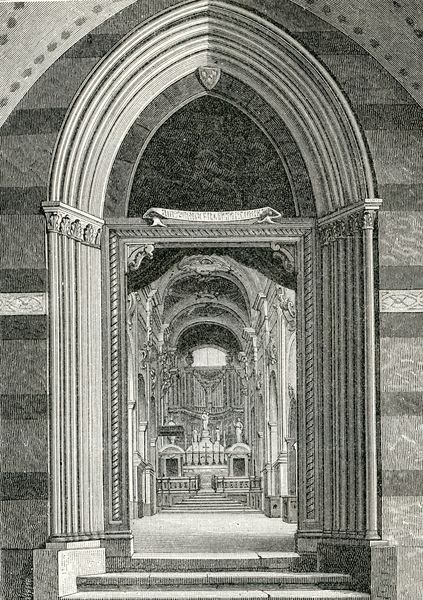
drawing, engraving, architecture
#
architectural sketch
#
drawing
#
building study
#
architectural landscape
#
architecture mock-up
#
perspective
#
structure design
#
historic architecture
#
geometric
#
architectural drawing
#
architecture drawing
#
architectural proposal
#
history-painting
#
academic-art
#
engraving
#
architecture
#
realism
#
historical building
Copyright: Public domain
Curator: Today we’re looking at "Interno Del Santuario," an engraving by Giuseppe Barberis, created around 1897. What strikes you most when you first look at this piece? Editor: The sheer volume, the use of visual space… it feels incredibly formal, almost oppressive in its meticulous detail. There's something about these cavernous interiors, devoid of human presence in the artwork itself, that speaks volumes about institutional power, don't you think? Curator: The technique employed—the intricate linework—undeniably constructs that sense of imposing grandeur. The use of perspective directs the eye inexorably towards the altar. What compositional strategies do you notice? Editor: And that altar – positioned at the very end of that very long hall, which might signal that accessibility is withheld from those who don't hold privilege or authority within the church. Look at the details within the confessional boxes and their architectural design! It presents itself as a place to seek forgiveness. Is redemption equally accessible to all, or does it reinforce power structures? Curator: A very interesting interpretation. Let's look at it formally. The light, despite being a black and white engraving, seems diffused yet precise, highlighting key architectural elements while shrouding others in shadow. This creates depth but also reinforces the structure's geometric purity. Editor: Geometric purity serving power. I see so much being left unsaid here. A place like this—a place of religious worship—inevitably means different things to different people across race, gender, and class. Who is it really *for*? And what does it exclude? Curator: It also reminds me of Piranesi’s etchings of prisons—vast architectural spaces. The graphic work accentuates verticality, reinforcing ideas of ascension, of heaven. Editor: That's true; visually it certainly implies transcendence. But these spaces are firmly *here*, materially constructed with earthly power and earthly money. What human stories aren’t we seeing reflected in the arches and ornamentation? I want to consider what's missing, what is marginalized. Curator: Barberis, in capturing this moment, leaves us with both an extraordinary aesthetic achievement and a profound reflection of a constructed hierarchy. Editor: It seems the artwork does provoke conversation—about architectural rendering, representational accuracy, the relationship between power and form, the stories that we tell ourselves about religious spaces. Thank you!
Comments
No comments
Be the first to comment and join the conversation on the ultimate creative platform.
